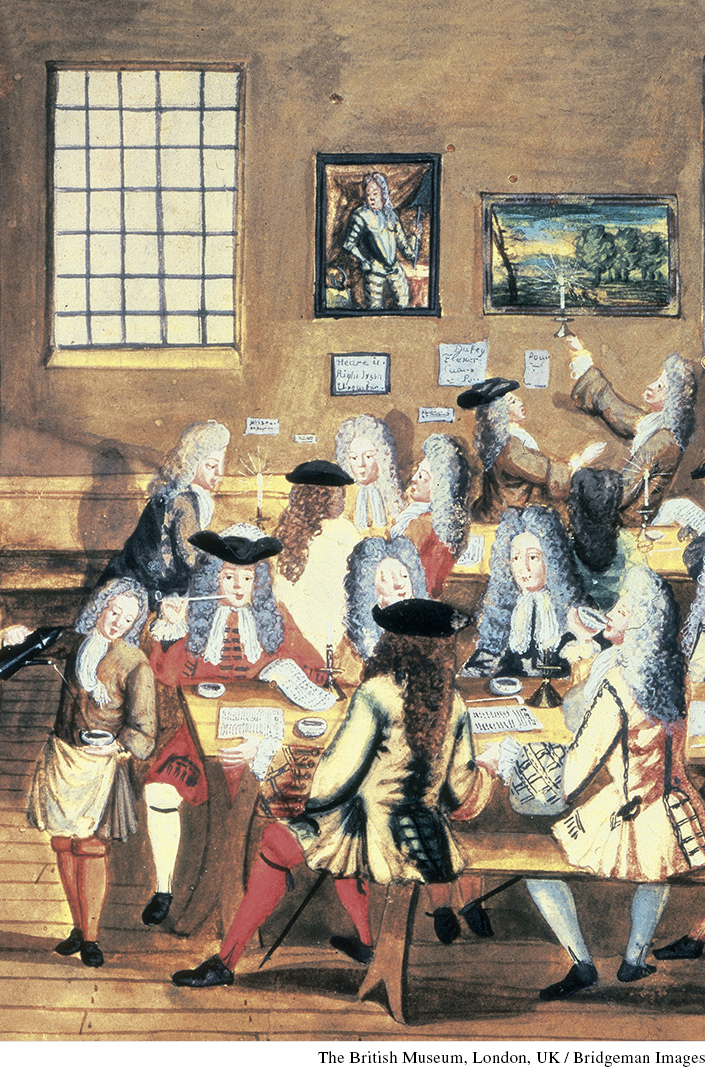Introduction for Chapter 17
Printed Page 540
Important Events
IN 1699, A FEW COFFEE PLANTS changed the history of the world. European travelers at the end of the sixteenth century noticed Middle Eastern people drinking a “black drink” called kavah, but the Arab monopoly on its production kept prices high. This all changed in 1699, when Dutch traders brought a few coffee plants from the east coast of India to their colony of Java (now Indonesia), which proved ideal for growing the beans. Within two decades, the trickle of beans going from Java to Europe became a flood of 200,000 pounds a year. After a shoot from a Dutch plant made its way to the Caribbean island of Martinique in 1721, coffee plants quickly spread throughout the Caribbean, where African slaves provided the plantation labor.
European consumption of coffee, tea, sugar, and other novelties increased dramatically as European nations forged worldwide economic links. At the center of this new global economy was the Atlantic system, the web of trade routes that bound together western Europe, Africa, and the Americas. Europeans bought slaves in western Africa, transported them to be sold in the colonies in North and South America and the Caribbean, bought raw commodities such as coffee and sugar that were produced by the new colonial plantations, and then sold those commodities in European ports for refining and reshipment. This Atlantic system, which first took clear shape in the early eighteenth century, became the hub of European expansion throughout the world.
Coffee drinking is just one example of the many new social and cultural patterns that took root between 1700 and 1750. Improvements in agricultural production at home reinforced the effects of trade overseas; Europeans now had more disposable income for extras, and they spent their money not only in the new coffeehouses and cafés that sprang up all over Europe but also on newspapers, musical concerts, paintings, and novels. A new middle-class public began to make its presence felt in every domain of culture and social life.
Although the rise of the Atlantic system gave Europe new prominence in the global context, European rulers still focused most of their political, diplomatic, and military energies on their rivalries within Europe. A coalition of countries had succeeded in containing French aggression under Louis XIV, and a more balanced diplomatic system emerged. The more evenly matched competition among the great powers encouraged the development of diplomatic skills and drew attention to public health as a way of encouraging population growth.
CHAPTER FOCUS What were the most important consequences of the growth of the Atlantic system?
In the aftermath of Louis XIV’s revocation of the Edict of Nantes in 1685, a new intellectual movement known as the Enlightenment began to germinate. An initial impetus came from French Protestant refugees who published works critical of absolutism in politics and religion. Fed by the popularization of science and the growing interest in travel literature, the early Enlightenment encouraged greater skepticism about religious and state authority. Eventually, the movement would question almost every aspect of social and political life in Europe. The Enlightenment, which began in western Europe in those countries most affected by the new Atlantic system—Britain, France, and the Dutch Republic—can be considered a product of the age of coffee.